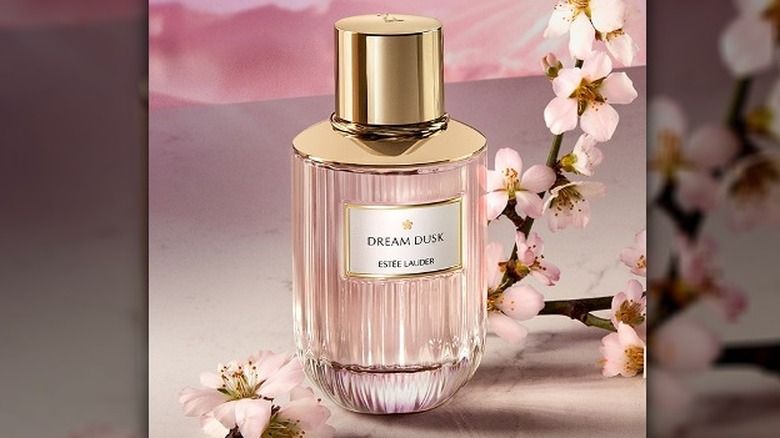What Scent Is Japanese Cherry Blossom?
Japanese cherry blossom scent is the aromatic fragrance associated with the delicate cherry blossoms that bloom across Japan each spring. The scent is light, floral, and slightly sweet, evoking the ephemeral beauty of the cherry blossoms. Though many associate the scent with the Yoshino cherry (Cherry blossom), it can come from various species that bloom in Japan.
Cherry blossom scent has a long history and cultural significance in Japan. The trees have been revered for centuries, and the distinctive floral aroma signifies spring, renewal, and the fleeting nature of life (The History of Sakura | Mind, Body & Soul). The delicate fragrance has inspired perfumers, candle makers, and other artisans to try to capture its evocative essence. Though subtle, the Japanese cherry blossom fragrance is recognizable worldwide.
Floral Notes
The key floral note that defines the scent of Japanese cherry blossom is the delicate, sweet aroma of the cherry blossom flower itself. The Japanese cherry blossom tree, also known as sakura, produces masses of pale pink and white flowers in spring that have a light, mildly fruity scent.
In addition to cherry blossom, the Japanese cherry blossom fragrance profile commonly includes soft, feminine florals like jasmine, rose, iris, and lily of the valley. These blended floral notes create an aroma that is fresh, floral, and slightly powdery.

Jasmine adds a sweet, heady element while rose provides a rich floral bouquet. Iris contributes a light powdery effect. Lily of the valley rounds out the floral heart of the fragrance with a fresh, dewy green facet.
Together, these floral notes create an impression of springtime femininity, delicate beauty, and new beginnings – an homage to the ephemeral beauty of Japanese cherry blossoms in bloom.
Fruity Notes
The fruity notes are an essential part of the Japanese cherry blossom fragrance profile. While the floral notes evoke the beautiful cherry blossoms themselves, it’s the blend of lush, ripe fruits that create a sweet, irresistible fragrance.
Specific fruity notes commonly found in Japanese cherry blossom scents include lychee, strawberry, and peach. The lychee adds an exotic, tropical fruitiness, often described as grape-like and slightly floral. Strawberry brings in a sweet, jammy berry scent that perfectly complements the floral notes. Peach provides a juicy, nectarous quality, with vivid images of summer stone fruits.
Together, these fruity notes create a mouthwatering fruit bouquet that mingles beautifully with the delicate cherry blossoms. The fruit accents make Japanese cherry blossom scents much more multi-dimensional, vivid, and appealing to the senses compared to solitary floral fragrances. They add succulence, sweetness, and a lively energy to balance out the gentle floralcy.
Woody Notes
The Japanese cherry blossom scent often contains woody base notes like sandalwood or cedarwood. These richer, woodier scents nicely complement the soft floral top notes of the fragrance. The sandalwood adds a subtle creaminess, while cedarwood contributes a gentle woodsy character. When blended into the Japanese cherry blossom fragrance, these woods smooth out the brighter citrus and floral notes to create a well-rounded bouquet. The sandalwood and cedar base provides staying power and makes the scent last longer on the skin. Many Japanese cherry blossom fragrances, from fine perfumes to body sprays, contain these woody bases to create depth and complexity. The woody notes ground the brighter cherry blossom floral notes and give the scent an elegant richness.
Creative Origins
The Japanese cherry blossom scent has a long history intertwined with Japanese culture. According to Wikipedia, from the late 19th century to the early 20th century, Collingwood Ingram collected and studied Japanese cherry blossoms, identifying and cultivating several well-known varieties.1 This helped preserve and spread cherry tree varieties within Japan and beyond.
In the early 20th century, perfumers began recreating the delicate scent of cherry blossoms. The subtle yet complex aroma evokes the ephemeral beauty of the flowers in bloom. Perfumers employ fruity top notes like peach and strawberry along with floral heart notes like jasmine, rose and lily of the valley to capture the essence of the flowers. The woody base notes of sandalwood and cedar give warmth and depth.
Today, the Japanese cherry blossom accord remains an iconic fragrance for perfumes, soaps, lotions and more. It recalls springtime renewal and the rich cultural heritage surrounding the fleeting blooms. Perfumers continue using innovative new extracts and aromachemicals to recreate and enhance the singular scent.
Cultural Significance
Cherry blossoms hold deep cultural and symbolic meaning in Japanese culture. Known as “sakura” in Japanese, the cherry blossom is revered for its beauty and seen as a symbol of renewal and impermanence. According to the Smithsonian, “Cherry blossoms are a symbolic flower of the spring, a time of renewal, and the fleeting nature of life. Their life is extremely short. After their beauty peaks around two weeks, the blossoms start to fall.”
Cherry blossom trees were originally brought from China to Japan over 1000 years ago and have become an enduring cultural icon. During the spring blooming season, the Japanese celebrate with cherry blossom festivals called “hanami” where people gather outdoors for parties under the trees. The fleeting beauty of the blossoms is seen as a metaphor for the transient nature of life, an appreciation for living in the present, and a reminder of the Buddhist concepts of mortality. As described by the Library of Congress, “The bloom’s early demise makes appreciation of nature’s beauty and life’s ephemeral nature major themes for this flower.”
The light, delicate scent of cherry blossoms also plays an important role. As specified by the Brooklyn Botanic Garden, the fragrance “has been celebrated in Japanese literature and poetry for centuries.” The sweet, floral cherry blossom scent is unmistakable during hanami celebrations and conjures nostalgic memories of spring renewal in Japanese culture.
Sources:
Significance of Sakura: Cherry Blossom Traditions in Japan
Sakura: Cherry Blossoms in Japanese Cultural History
Use in Products
The Japanese cherry blossom scent is widely used in a variety of personal care and home products. Its delicate floral notes evoke the imagery of springtime in Japan, making it a popular fragrance choice.
In skincare and bath products, the Japanese cherry blossom scent can be found in body lotions, shower gels, bubble baths, and more. Major brands like The Body Shop and Bath and Body Works have released extensive lines of cherry blossom-scented products due to the fragrance’s popularity.
Candles and wax melts with the Japanese cherry blossom fragrance are also prevalent, especially during the spring season. Brands like Yankee Candle, Village Candle, and Chesapeake Bay Candle offer these products to help create an uplifting, floral atmosphere.
The fragrance oil is also blended into room sprays, perfumes, sachets, and potpourri. Home decor companies often release special collections centered around the Japanese cherry blossom motif. Overall, it is one of the most ubiquitous floral fragrances used in personal and household items.
Regional Variations
The scent of Japanese cherry blossoms can vary slightly across different regions of Japan. According to Dragonfly Fragrances [1], the cherry blossoms in southern Japan tend to be more intensely floral and fruity compared to other areas. The warmer climate produces cherry blossoms with stronger notes of rose, magnolia, cherry, and pear.
In contrast, the cherry blossom fragrance in northern and mountainous central Japan is often more subtle. The cooler climate results in lighter floral notes like mimosa and jasmine, blended with sandalwood, tonka bean, and other woody undertones according to Bath & Body Works [2]. The varying growing conditions across Japan’s regions create slight variations in the cherry blossoms’ scent.
Buying Guide
When looking to buy high-quality products fragranced with Japanese cherry blossom, here are some helpful tips:
Check the ingredients list and look for natural floral essences like cherry blossom extract, rather than synthetic fragrance oils. Authentic Japanese cherry blossom fragrance will contain notes of plum, strawberry, rose, jasmine, and hyacinth (https://www.ubuy.fr/en/brand/japanese-cherry-blossom).
Look for products made in Japan as they are more likely to use traditional Japanese cherry blossom fragrance. However, some high-quality products made elsewhere can also feature this scent.
Opt for brands that specialize in natural ingredients and fragrances, as these tend to offer a more authentic and higher quality cherry blossom scent.
When buying skincare, hair care or cosmetics, read reviews to ensure the cherry blossom fragrance is subtle and not overpowering.
Consider buying from Japanese specialty import stores online or in person to access exclusive and authentic cherry blossom products.
If sampling perfumes or candles, be sure to test on your skin and in your home first, as scent can vary by individual body chemistry and environments.
Conclusion
The distinctive scent of Japanese cherry blossoms contains a complex blend of floral, fruity, and woody notes. The primary floral notes include plum, violet, rose, jasmine, and cyclamen. Subtle fruity top notes of peach, pear, and strawberry complement the florals. Underneath lies the richer, woodier base notes of sandalwood, cedar, and musk. This unique fragrance profile evokes the ephemeral beauty of sakura season in Japan. Though originally inspired by the Yoshino cherry tree, the Japanese cherry blossom scent has evolved over time into a versatile fragrance used in many beauty products worldwide. The delicate bouquet conjures tranquil images of falling sakura petals and hanami gatherings. When experienced, the Japanese cherry blossom scent transports one’s imagination to the magical blossom-filled parks and gardens of Japan.



